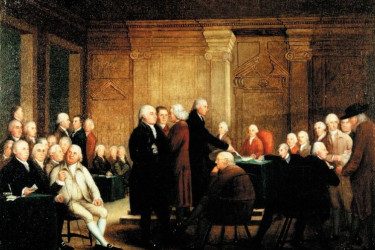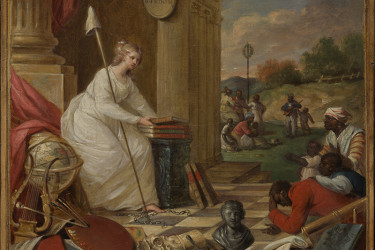Over a century ago, the historian Carl Becker remarked that the American Revolution had two components: the contest with Great Britain over “home rule” and an internal struggle over political and economic power—or the question of who should rule at home. In the past few decades, as part of a broader shift in historical scholarship, the study of the revolution from below has become a major cottage industry. Indeed, just as most of the 1619 Project’s content was not new to those familiar with recent writing about slavery and race, the idea that ordinary Americans did much to shape the revolution is now commonplace. What is new in Holton’s latest book, Liberty Is Sweet: The Hidden History of the American Revolution, is his effort to unite “the known and unknown revolutions” in a single narrative. Like Becker, to whom he tips his hat by titling one chapter “Who Should Rule at Home?,” Holton depicts the revolution as simultaneously a struggle for independence and a series of overlapping conflicts between and within groups of Americans. The result is a book with a remarkably capacious cast of characters. Jefferson, Washington, and other iconic founders are here, but so too are the many “obscure Americans” who were also consequential historical actors. By foregrounding their experience, Holton arrives at a complex, bittersweet calculus of how independence was achieved and who gained or lost as a result.
In the years leading up to the War of Independence, Holton writes, “vicious” internal conflicts plagued the American colonies. In the Hudson Valley, tenant farmers resisted the exorbitant rents demanded by landlords. Mobs in backwoods North Carolina calling themselves “Regulators” refused to pay taxes levied by the far-away provincial legislature. Slaves openly demanded freedom. Native Americans resisted white settlers encroaching on their land, leading to persistent violence on the frontier. Holton notes that far from uniting Americans, the war exacerbated these and other cleavages. Communities fractured into loyalists and patriots. More and more lower-class Americans challenged existing elites. (“The gentry begin to fear this,” remarked Gouverneur Morris.) Native American nations chose sides, so that Native warriors sometimes faced one another in combat. And, Holton writes, the war became, in part, “an African American civil war,” as slaves aligned with whichever combatant seemed to advance their own prospects for freedom. Once France and Spain entered the conflict on the side of the colonists, the War of Independence was also absorbed into the long-standing struggle for global power among European empires. As Holton points out, George Washington sent troops into battle not only against the British Army but also against Native Americans, Hessians, and Black soldiers. This is not your grandfather’s American Revolution, a simple tale of liberty-loving patriots rising up against British tyranny.




















